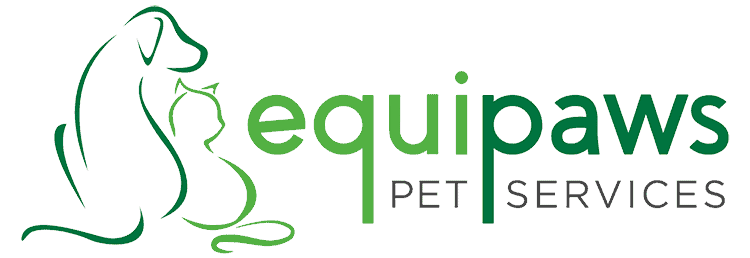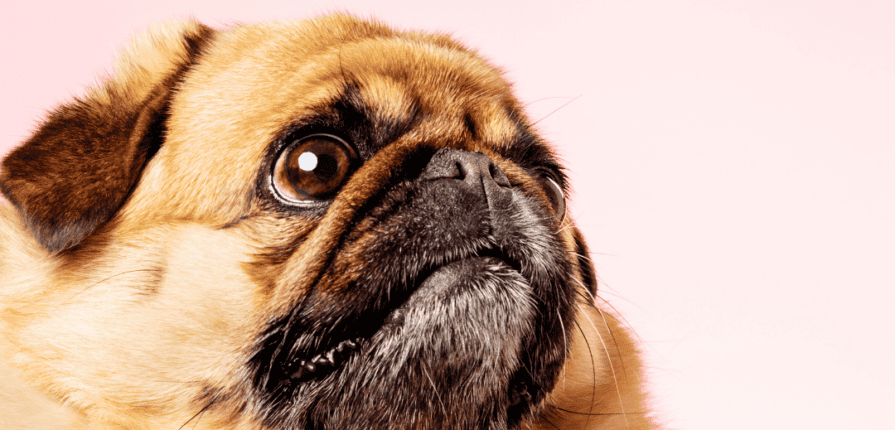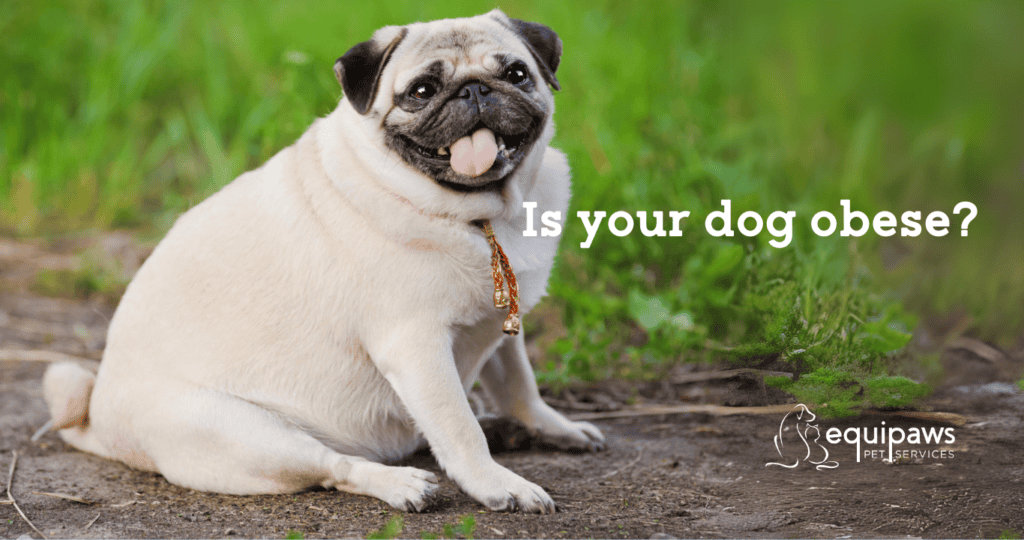Is your dog obese? Here’s how to help.
One of the biggest challenges we may face as pet parents is that dreadful moment when we realize our beloved pup is carrying more weight than is healthy. Obesity in dogs is certainly more common than we might think- the Association for Pet Obesity Prevention noted that 55% of dogs in the US are overweight or obese. Carrying extra weight can lead to a slew of health problems, both acute and chronic, including a shortened lifespan (one study shows a reduction of nearly 2 years).
Dogs are considered obese when they weigh more than 20% above their ideal body weight. What’s the difference between a pup that’s overweight by a few pounds because they enjoy the occasional peanut butter delicacy and one that’s identified as obese? One can be treated by lessening those delicious treats, and the latter calls for a more gradual, detailed plan that includes exercise, possible changes in diet, and even medication.
How to tell if a dog is obese:
The moment we believe our pet may be obese is the moment we can start taking action steps. How can you tell if your dog is obese? Your veterinarian will tell you at your check-up, but you can test at home in-between visits.
The Animal Humane Society recommends we do the “rib test” for our pets to analyze their weight. If we press to feel their ribs and we feel a small layer of fat above their ribs, they’re at a healthy weight. If we have to press hard to feel their ribs, they’re over the recommended weight. You can also look at your pet from above and see if they’re oval-shaped, meaning their waist is filling out.
Always speak to your veterinarian about any recent weight gain. Some illnesses and diseases manifest with weight gain, and you want to rule them out with a professional when you start planning your pup’s weight-loss regimen.
How can we help our obese dogs lose weight?
Start by aligning your focus with solutions instead of guilt. It’s easy for us to get wrapped up in the anxiety and guilt that can come from getting an obese diagnosis for our pets after a visit to the veterinarian. The truth is, when we know better we do better. Once you have a diagnosis, it’s our job to become more empowered by understanding and using the tools available to help our pups.
Your veterinarian will likely recommend an increase in exercise and a change in diet. This is a group effort- it takes a village, and Equipaws Pet Services is here to help you with your obese dog’s walking needs!
1. Increase your dog’s daily exercise
The joints of obese dogs can take a beating with all that extra weight. A professional dog walker can come in handy as they can take your pup on short walks initially. They will gradually help build up your obese dog’s stamina and strength. You can work hand in paw with an Equipaws dog walker to keep track of how far your pup can walk without overheating or hurting joints. We will honor your vet’s recommendations on the distance they should be walking around your neighborhood. We’ll also report on their progress, and keep them engaged and motivated for their exercise routine while respecting their place on their weight-loss journey.
We know it can be hard to commit to walking our dogs daily, what with work, family, and other pressures. It’s important to hire a professional dog walker who will show up reliably on a set schedule for your pup’s exercise regime and consistently walk them so your dog can improve their health and live a fitter, happier, longer life.
2. Change your dog’s diet
Check the quality of your dog’s diet, especially the protein. Make sure you consult with your vet about the quantity and quality of food your dog is eating. Different dog breeds metabolize foods slightly differently, in some cases a simple tweak could do the trick.
Dog Food: Quality:
In addition to how much your pet is eating, you want to analyze what’s in your dog’s food. Unfortunately, a lot of commercial companies understand that, just like humans, dogs LOVE fun-tasting foods. They often take advantage of that by packing their products with artificial flavors to get the dogs intrigued. When you look at the labels, many of these products are very high in carbs and filler products like corn and shredded bones. It’s the equivalent of your pup eating junk food. Chat with your vet or a nutritionist for guidance on how to transition your dog out of these lower-quality foods into a better product. We recommend going to local pet supply stores like Your Pets Best or Animal Crackers Miami.
Dog Food: Quantity:
Be extra vigilant that your dogs haven’t been getting treats from visitors or well-meaning family members. Sometimes people around us want to spoil our pets and don’t take into account their daily caloric intake. Set firm boundaries with doting grandparents or even your kids. Remember, there are lots of ways to give love and validation that don’t involve food, like playtime, cuddles, and working on tricks and other mental games.
Curbing Dog Obesity: You’re in Charge
Daisy the Goldendoodle doesn’t have jeans to button every day, so she’s not aware she’s putting on weight. She’s also unable to explain the heaviness she’s now feeling on her joints or hips or her newfound lethargy. That’s why it’s so important for us to be proactive and conscious about what our dogs are consuming, the energy they’re expending, and of course, keep an eye out for any changes in movement and lethargy. We can reduce and stabilize our pups’ weight so they live long, healthy lives. All they need is a little structure, guidance, and some extra exercise and love. Reassuring them how well they’re doing can go a long way, and remember: Equipaws is here to help with their daily dog walking needs!



